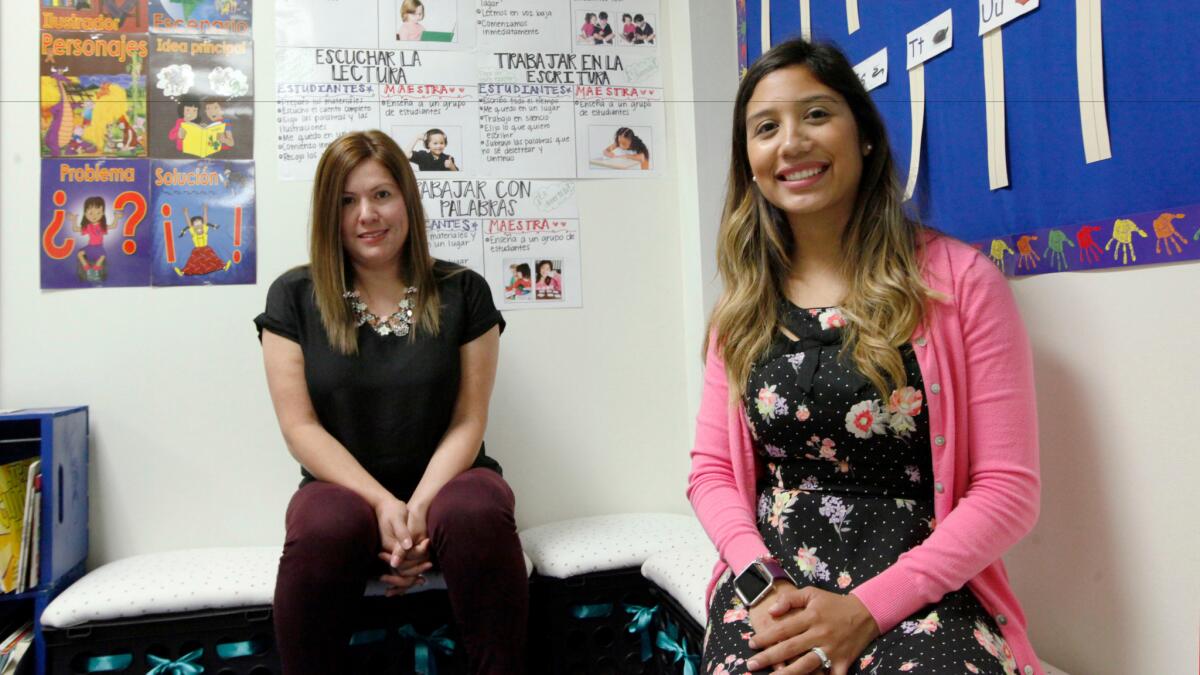Editorial: Proposition 58 would bring back bilingual education in California. And that’s a good thing.

- Share via
Proposition 227, the 1998 initiative that eliminated most bilingual education in California, was heavily tinged with resentment toward immigrants. But there was also an element of legitimate frustration. Instead of bringing non-English speaking students to fluency over time, many public schools were letting them languish in Spanish-only classes through most of their education, dooming them to a future without college education or access to better-paying jobs. Immigrant parents were staging protests in L.A. against these programs.
But there’s a difference between bilingual education done badly and bilingual education done right. A vast store of research shows that bilingual education, when it is well-designed and implemented, can be at least as good, and often better at helping immigrant and other non-English speaking students gain academic proficiency.
Fast-forward 18 years. There are 1.4 million English language learners in the California schools — one in five students. Even with the reduction in bilingual education as a result of Proposition 227, California’s ELL students are still taking far to long to become fluent. Meanwhile, dual-language immersion programs — in which native English-speaking students and those who started with another language at home are brought together to learn in both languages — are increasingly popular and, early signs suggest, effective. There is also heightened recognition of economic globalization, and the greater diversity and multilingualism of California, that make bilingualism attractive.
Proposition 58 seeks to overturn the 1998 edict, providing more flexibility to schools and parents to choose how to teach English learners. Schools would no longer be required to teach them in English-only programs unless parents specifically requested otherwise, but could offer a variety of programs, including bilingual ones. Parents of English-language learners would no longer need to sign waivers to allow their children to participate in bilingual programs.
Parents would still have to be offered intensive English-immersion classes for their children; nothing in the initiative would mandate a switch to bilingual education. Instead the matter would be left to local school districts, responding to parents’ preferences for their children. And there are very few immigrant parents in this state who don’t want their children to be fluent in academic English; they know it is a ticket to a good future. Fluency in multiple languages including English is even better.
So what’s to prevent a return to bilingual ed done badly? Parents would be more empowered under the initiative to have a voice in their children’s education than they were under the old system, and they’re unlikely to settle for programs that aren’t teaching their children English skills. The new accountability system for schools that the state is rolling out demands improvement in English fluency for non-native speakers. And if students aren’t achieving academically, Proposition 58 could be amended through a simple majority vote of the Legislature.
Immigrant parents and their local school districts should be trusted to work this out together. Vote yes on Proposition 58.
Follow the Opinion section on Twitter @latimesopinion and Facebook
More to Read
A cure for the common opinion
Get thought-provoking perspectives with our weekly newsletter.
You may occasionally receive promotional content from the Los Angeles Times.









